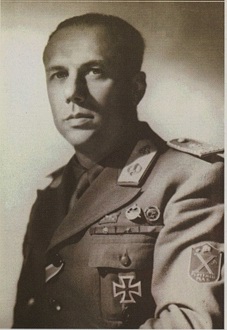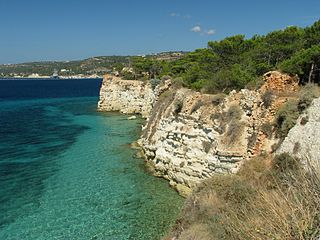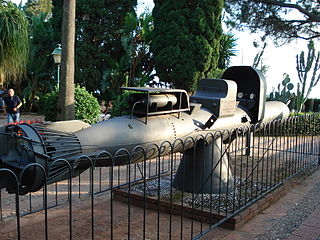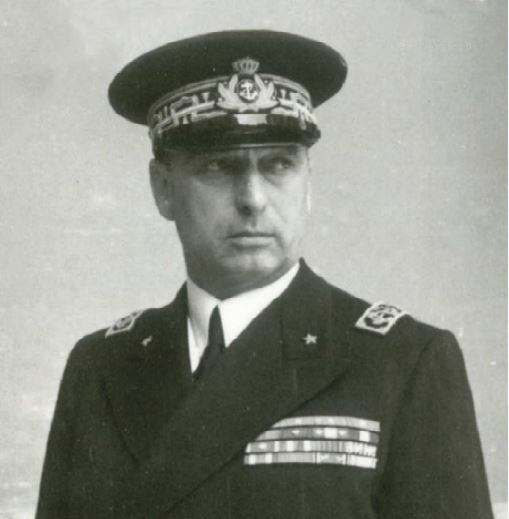
The Battle of Cape Matapan was a naval battle during the Second World War between the Allies, represented by the navies of the United Kingdom and Australia, and the Royal Italian navy, from 27 to 29 March 1941. Cape Matapan is on the south-western coast of the Peloponnesian Peninsula of Greece.

HMS Kingston was a K-class destroyer of the Royal Navy.

Operation Pedestal, known in Malta as Il-Konvoj ta' Santa Marija, was a British operation to carry supplies to the island of Malta in August 1942, during the Second World War.

Junio Valerio Scipione Ghezzo Marcantonio Maria Borghese, nicknamed The Black Prince, was an Italian Navy commander during the regime of Benito Mussolini's National Fascist Party and a prominent hardline neo-fascist politician in post-war Italy. In 1970, he took part in the planning of a neo-fascist coup, dubbed the Golpe Borghese, that was called off after the press discovered it; he subsequently fled to Spain and spent the last years of his life there.

The Second Battle of Sirte was a naval engagement in the Mediterranean Sea, north of the Gulf of Sidra and southeast of Malta, during the Second World War. The escorting warships of a British convoy to Malta held off a much more powerful squadron of the Regia Marina. The British convoy was composed of four merchant ships, escorted by four light cruisers, one anti-aircraft cruiser and 17 destroyers. The Italian force comprised a battleship, two heavy cruisers, one light cruiser and ten destroyers. Despite the initial British success at warding off the Italian squadron, the Italian fleet attack delayed the convoy's planned arrival before dawn, which exposed it to intense air attacks that sank all four merchant ships and one of the escorting destroyers in the following days.

The Decima Flottiglia MAS was an Italian flotilla, with commando frogman unit, of the Regia Marina created during the Fascist regime.

The Battle of the Mediterranean was the name given to the naval campaign fought in the Mediterranean Sea during World War II, from 10 June 1940 to 2 May 1945.

Souda is a town and former municipality in the Chania regional unit, Crete, Greece. Since the 2011 local government reform it is part of the municipality Chania, of which it is a municipal unit. The municipal unit has an area of 22.007 km2 (8.497 sq mi). It is an important ferry and naval port at the head of Souda Bay.

HMS York was the lead ship of her class of two heavy cruisers built for the Royal Navy in the late 1920s. She mostly served on the North America and West Indies Station before World War II. Early in the war the ship escorted convoys in the Atlantic and participated in the Norwegian Campaign in 1940. York was transferred to the Mediterranean theatre in late 1940 where she escorted convoys and the larger ships of the Mediterranean Fleet. She was wrecked in an attack by Italian explosive motorboats of the 10th Flotilla MAS at Suda Bay, Crete, in March 1941. The ship's wreck was salvaged in 1952 and scrapped in Bari.

HMS Diamond was a D-class destroyer built for the Royal Navy in the early 1930s. The ship spent the bulk of her career on the China Station. She was briefly assigned to the Mediterranean Fleet in 1939 before she was transferred to West Africa for convoy escort duties. Diamond returned to the Mediterranean Fleet in early 1940 where she generally escorted convoys to and from Malta. The ship participated in the Battle of Cape Spartivento in November. Diamond was sunk by German aircraft on 27 April 1941 whilst evacuating Allied troops from Greece.

Operation Abstention was a code name given to a British invasion of the Italian island of Kastelorizo (Castellorizo) off the Turkish Aegean coast, during the Second World War, in late February 1941. The goal was to establish a motor torpedo-boat base to challenge Italian naval and air supremacy on the Greek Dodecanese islands. The British landings were challenged by Italian land, air and naval forces, which forced the British troops to re-embark amidst some confusion and led to recriminations between the British commanders for underestimating the Italians.

The Raid on Alexandria was carried out on 19 December 1941 by Italian Navy divers of the Decima Flottiglia MAS, who attacked and disabled two Royal Navy battleships in the harbour of Alexandria, Egypt, using manned torpedoes.

The auxiliary ship Olterra was a 5,000 ton Italian tanker scuttled by her own crew at Algeciras in the Bay of Gibraltar on 10 June 1940, after the entry of Italy in World War II. She was recovered in 1942 by a special unit of the Decima Flottiglia MAS to be used as an undercover base for manned torpedoes in order to attack Allied shipping at Gibraltar.

The explosive motorboat MT also known as barchino, was a series of small explosive motor boats developed by the Italian Royal Navy, which was based on its predecessors, the prototype boat MA and the MAT, an airborne prototype. Explosive motorboats were designed to make a silent approach to a moored warship, set a collision course and run into full gear until the last 200 or 100 yards to the target, when the pilot would eject after blocking the rudder. At impact, the hull would be broken amidships by a small explosive charge, sinking the boat and the warhead, which was fitted with a water-pressure fuse set to go off at a depth of one metre.

The MTSM motor torpedo boat was a series of small motor torpedo boats developed by the Italian Royal Navy during World War II.

Quarto was a unique protected cruiser built by the Italian Regia Marina in the 1910s. Her keel was laid in November 1909, she was launched in August 1911, and was completed in March 1913. She was the first Italian cruiser to be equipped with steam turbines, which gave her a top speed of 28 knots. Her high speed was a requirement for the role in which she was designed to serve: a scout for the main Italian fleet.

Luigi Biancheri was an Italian admiral during World War II.

Mario Arillo was an Italian naval officer during World War II.

Luigi Faggioni was an Italian naval officer during World War II, and an admiral in the postwar Marina Militare.

Vittorio Moccagatta was an Italian naval officer during World War II. He commanded the Decima Flottiglia MAS, the special operations unit of the Royal Italian Navy, from September 1940 until his death in action on 26 July 1941.






















